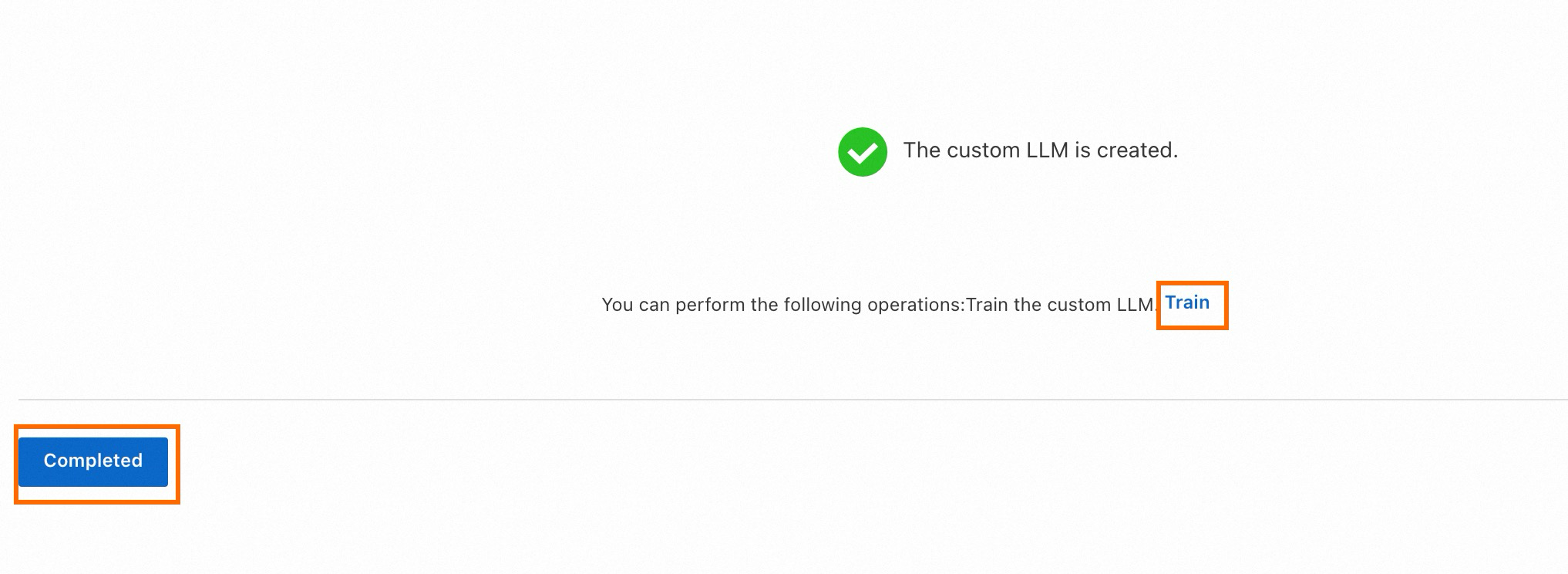The OpenSearch-LLM-Based Conversational Search Edition enhances user search and Q&A experiences by introducing a custom LLM feature. This allows for the fine-tuning of pre-trained general LLMs to specific business scenarios. This topic outlines the process for creating and training custom LLMs.
Create custom LLM
The custom LLM feature is available exclusively in the Professional Edition of the OpenSearch-LLM-Based Conversational Search Edition instance.
Go to Model Management > LLM and click Create Custom LLM.
Enter the Model Name, Base Model, and Existing Q&A Pair parameters.
Model Name: The name can be 1 to 30 characters in length. It must start with a letter and can contain letters, digits, and underscores (_). The name of a model must be unique.
Base Model: Currently, only opensearch-llama2-13b is supported.
Existing Q&A Pair: XLSX files with a maximum size of 128MB. The file name can contain only letters, digits, underscores (_), and hyphens (-). A sample data file is available for download to use as a format reference.
Format Example:
query
answer
What is OpenSearch
OpenSearch is a one-stop platform used to develop intelligent search services. It is built based on a large-scale distributed search engine platform developed by Alibaba Cloud.
What are the typical scenarios for the Intelligent Q&A Edition
OpenSearch LLM-Based Conversational Search Edition has built-in large language models (LLMs). It helps enterprises build dedicated search models based on business data, allows you to quickly import data of various formats, and provides search services for multiple models such as conversations, links, and images. This helps developers quickly build an end-to-end conversational search system.
Billing Method: For more information, see Billing overview of OpenSearch LLM-Based Conversational Search Edition.
NoteQuantity Limit: The maximum number of custom LLMs corresponds to the number of GPUs in the instance, viewable in the instance details interface. The highest number of GPUs available for rent per instance is 10.
Click Submit to create the custom LLM. Once created, you can click Train to start training immediately or click Completed to return to the Model Management page.

Train custom LLM
After creating the custom LLM, click Details on the Model Management page to review the Basic Information, Configuration Information, and Training History. At this time, Model Status is Unavailable, and the Latest Version Status is Pending Training. Click Configure to adjust the existing Q&A pairs.

Go back to the Model Management page and click Train in the Actions column. Then, click OK to start training.

Click Details to check the status of the model. The Model Status is Unavailable, and the Latest Version Status is Training.
Once the training is complete, click Test Effect to evaluate the performance.